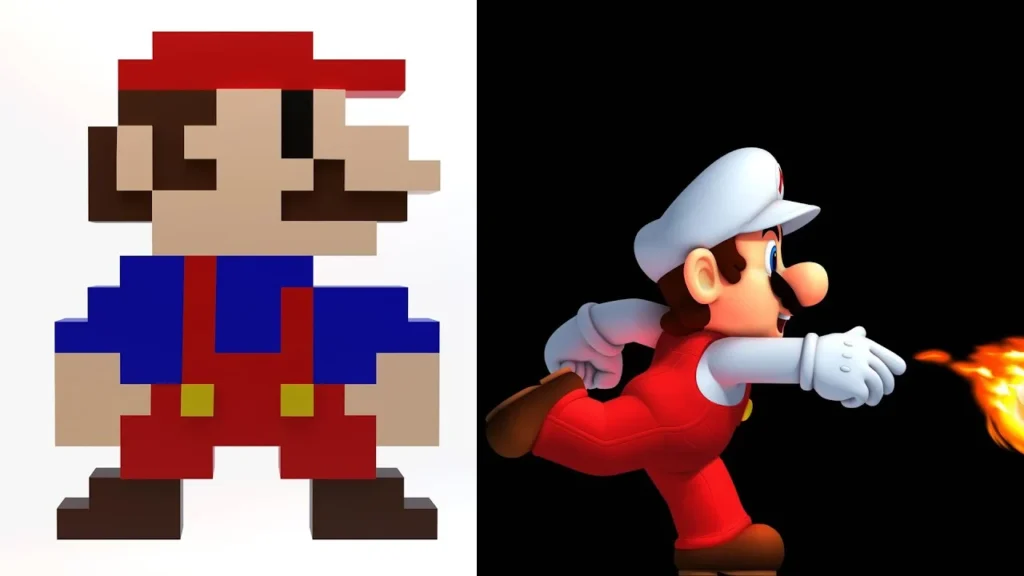Game psychology explains why players chase challenging tasks and meaningful rewards, and it reveals how design choices steer attention, shape emotion, and guide behavior within playful experiences, helping developers craft moments that feel inevitable, enjoyable, and worth returning to again and again, across genres, platforms, and audiences—from quick mobile puzzles to sprawling simulations—through subtle shifts in pacing, feedback timing, and narrative framing. By incorporating gamification strategies, designers can spark curiosity, structure reward loops, and create a sense of progression that invites continued exploration, reducing fatigue and turning routine tasks into meaningful quests that illuminate a path toward mastery, while also accounting for cultural differences, accessibility, and diverse play styles. Crucially, intrinsic motivation—the inner urge to engage for its own sake—often fuels durable engagement far beyond external prizes, because people participate because the activity itself feels valuable, interesting, and aligned with their sense of autonomy and competence, enabling long-lasting habit formation and transfer of skills to real life. Effective experiences use clear feedback, balanced progression, and purposeful rewards to elevate player engagement while avoiding manipulation, coercion, or fatigue, and they do so through thoughtful reward design that respects agency, communicates next steps, and rewards real growth, while also ensuring transparency and avoiding exploitative loops that erode trust. Ultimately, when the challenge and reward systems are calibrated to support autonomy, competence, and relatedness, players invest in growth, learning, and lasting interest, turning gameplay into a platform for practical skill development and meaningful personal progress, with communities that reinforce practice, peer feedback, and shared achievement.
From a broader lens, this discipline is described as the cognitive and emotional science of play, the study of how rules, feedback, and social dynamics shape decisions in interactive experiences. In practice, analysts talk about the motivational dynamics of games, the psychology of play, and the design of engaging systems that blend narrative, challenge, and reward with user autonomy. Other terms include ludology, game studies, and play engineering, all pointing to the same core idea: people are driven by curiosity, mastery, social belonging, and the satisfaction of solving problems. By framing the topic through these alternative angles and related concepts, creators can apply insights to education, health, and work without losing sight of player-centered design.
Game psychology: Balancing Challenge and Reward to Drive Intrinsic Motivation
Game psychology explains how people respond to rules, feedback, and goals within structured play. When players face challenges that match their growing skills, they enter flow—a focused state where effort feels meaningful and time slips by. This balance rests on calibrating difficulty so tasks are solvable but not trivial, which reinforces a sense of competence and autonomy, the core of intrinsic motivation. In practice, designers tap into this by shaping progression, feedback loops, and meaningful milestones that acknowledge mastery rather than merely awarding points.
To translate this into real-world experiences, one must balance challenge with reward systems and clear goals. Reward design should offer both immediate feedback and longer-term incentives that reinforce real growth. By blending valid challenges with opportunities for exploration, players stay engaged and see value in the journey, not just the endpoint. The risk of over-motivating with extrinsic rewards can undermine intrinsic motivation; therefore, the best approaches respect autonomy and provide authentic opportunities for problem solving, experimentation, and micro-competence.
Leveraging Gamification, Reward Design, and Player Engagement for Sustainable Motivation
Gamification as a broader practice uses game design elements to make non-game tasks compelling. In this context, reward design and progress cues—levels, badges, unlocks—shape how players perceive effort and achievement, influencing player engagement over time. When systems align with intrinsic motivation, tasks become experiences of mastery rather than chores, increasing persistence and learning.
Effective implementations weave challenge and reward systems with social dynamics and autonomy. By offering meaningful choices, transparent progress, and social recognition, gamified experiences sustain motivation and reduce fatigue. The result is a sustainable loop where engagement grows as players see real progress, mastery, and personal relevance—hallmarks of successful gamification that translate into real-world outcomes.
Frequently Asked Questions
In game psychology, how do intrinsic motivation and reward design work together to sustain player engagement?
In game psychology, intrinsic motivation drives long‑term engagement by fulfilling needs for mastery, autonomy, and curiosity. Reward design then provides timely feedback and meaningful milestones that reinforce progress. The best systems blend intrinsic rewards (satisfaction from learning and mastery) with well‑timed extrinsic rewards (points, badges) and calibrate the challenge to keep players in flow—neither overwhelmed nor bored. This balance sustains player engagement without feeling manipulative.
How can gamification and challenge‑and‑reward systems be implemented in line with game psychology to motivate real‑world tasks?
Apply game psychology principles to real‑world tasks through gamification by setting clear purpose and meaningful goals, calibrating difficulty to the user’s skill, and using substantive progress cues that reflect real growth. Balance intrinsic rewards (mastery, curiosity) with extrinsic rewards (badges, points), offer autonomy and multiple paths, and include social elements to boost engagement. Monitor for reward inflation and fatigue, and iterate based on user feedback to maintain authentic motivation.
| Section | Key Points |
|---|---|
| The Psychology Behind Play | Explores responses to rules, feedback, and goals; seeks mastery, autonomy, and relatedness; reward cues shape anticipation and behavior. |
| Challenge as Catalyst for Motivation | Flow occurs when challenge matches skill; balanced difficulty sustains engagement; growth is driven by solving problems and refining strategies; intrinsic motivation fuels persistence. |
| Reward Systems: The Language of Feedback | Rewards acknowledge effort and guide next steps; consider immediacy vs. delay, extrinsic vs. intrinsic rewards, and variable rewards; thoughtful design supports autonomy and competence. |
| Gamification and Beyond | Applying game-design principles to non-game contexts; effective when intrinsic motivation is paired with well-placed extrinsic rewards; risk of over-optimizing for rewards. |
| The Role of Feedback, Progress, and Social | Clear goals, visible progress, and meaningful feedback loops; progress indicators create momentum and foster social dynamics like competition and collaboration. |
| Intrinsic Motivation: The Quiet Engine | Intrinsic motivation drives curiosity, exploration, and mastery; lasting engagement comes from discovery and challenge for its own sake. |
| Balance and Boundaries | Overbearing rewards can cause fatigue or burnout; the overjustification effect reduces intrinsic interest; design rewards to reflect genuine mastery and meaningful progress. |
| Real-World Implications | Game psychology informs education, fitness, and work; enhances learning, routine, participation, and recognition while honoring intrinsic motivation and clear goals. |
| Practical Guidelines for Harnessing Game Psychology | Set meaningful goals; calibrate challenge; use substantive progress cues; balance intrinsic and extrinsic rewards; offer autonomy; foster social connections; monitor fatigue and avoid reward inflation. |
| A Few Concrete Examples | Language-learning apps with short drills and mastery badges; fitness programs with micro-challenges and leaderboards; educational platforms with problem-solving narratives and collaboration. |
Summary
Game psychology explains why players persist, seek mastery, and respond to feedback across games and real-world tasks. This descriptive overview highlights how balance between challenge and reward, intrinsic motivation, and social dynamics shape engagement, learning, and behavior change. Flow emerges when skill and difficulty align, while meaningful progress cues and timely feedback sustain momentum. Effective game design blends autonomy, competence, and relatedness to support genuine growth rather than manipulation. Real-world applications—from education to fitness and workplace training—benefit when systems honor intrinsic motivation and provide clear goals and authentic milestones. By applying these principles, designers can create experiences that are engaging, educative, and sustainably motivating.



